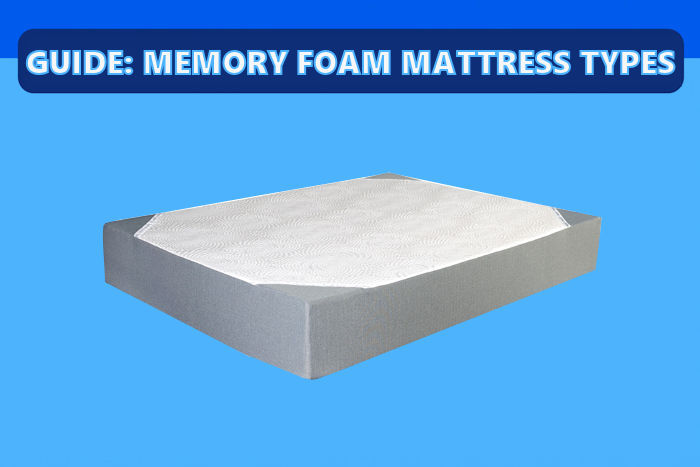Mattresses
SHOP STANDARD SIZES
SHOP STANDARD SIZES
SHOP BY TYPE
SHOP BY BRAND
RV Mattresses
Adjustable Beds
Shop By Brand
Shop By Size
Oversized Beds
Types of Memory Foam
Memory foam is an excellent material for mattresses because it reacts to the body’s pressure and temperature. Many brands in the sleep industry have contributed research to improve memory foam’s usefulness in mattresses. This has led to changes in the techniques used to produce the popular types. Memory foam started as a simple polyurethane foam but now there are several types available.
- Classic Viscoelastic: Traditional memory foam mattresses are made using the classic memory foam recipe. While the petroleum-based foam excels in some areas pertaining to sleep, it has drawbacks in others. Classic viscoelastic cradles and contours the body. This lessens pressure points and allows for a more even weight distribution. That goes a long way to providing comfort. However, early memory foam mattresses were found to retain heat and lack in response time. So, mattress companies began exploring ways to minimize these shortcomings.
- Other Methods of Manufacturing: Each mattress brand has a different approach to addressing these issues. Cooling gel is used in most new mattresses, but it can be integrated into mattresses in distinct ways. Each method has differing costs associated with it, which can influence the final price tag.
- Gel Coated: Perhaps the simplest of the advanced is made using this technique. It may seem simple, but it uses more cooling gel so it can be cost prohibitive. It consists of applying a layer of cooling gel on the top of the memory foam. Gel coated provides excellent cooling capacity. It is generally a part of a multi-layer mattress system. These layers often include a base, transition foam and a few inches of gel coated memory foam.
- Gel Infused: Gel infused foam uses another process for adding cooling gel. When doing this, the gel is added to the memory foam mixture before it is set in the mold. This results in gel microbeads throughout the memory foam layer. Incorporating the gel adds cooling performance to the memory foam, ensuring even temperature regulation throughout the sleep surface. It is a good solution for those who sleep hot.
- Cooling Gel “Spiked”: Most memory foam mattresses use gel spikes to add a cooling attribute. For these, tiny spikes of gel are used all through the memory foam. This is an effective way to combat the overheating that occurs when a gel is not used at all. It is also one of the less expensive ways to make cooling memory foam. For this reason, it is the prevailing means to do so in the industry.
- Foam Density and Firmness: Memory foam beds are made with layers of different densities. Usually, the lower layer is a high-density polyurethane foam base. It must be a higher density because it supports the entire mattress. The density of the upper layer is often what gives the mattress its firmness. A soft memory foam mattress usually has a weight of 3 pounds per cubic foot or less. A medium will be between 4-5 pounds per cubic foot and firmer mattresses anywhere above that.
What Type of Memory Foam is Good for Me?
There are many different types of memory foam mattresses. Each shares the underlying benefits of properties. They react to the warmth of a body to soften and contour for comfortable sleep. Some types of memory foam incorporate cooling gel to add an extra advantage. Every person is unique, with sleep needs that differ. When deciding which is the best option for you, take into account your budget, sleep style and personal preferences.
© 2025 Rest Right Mattress. All Rights Reserved.


